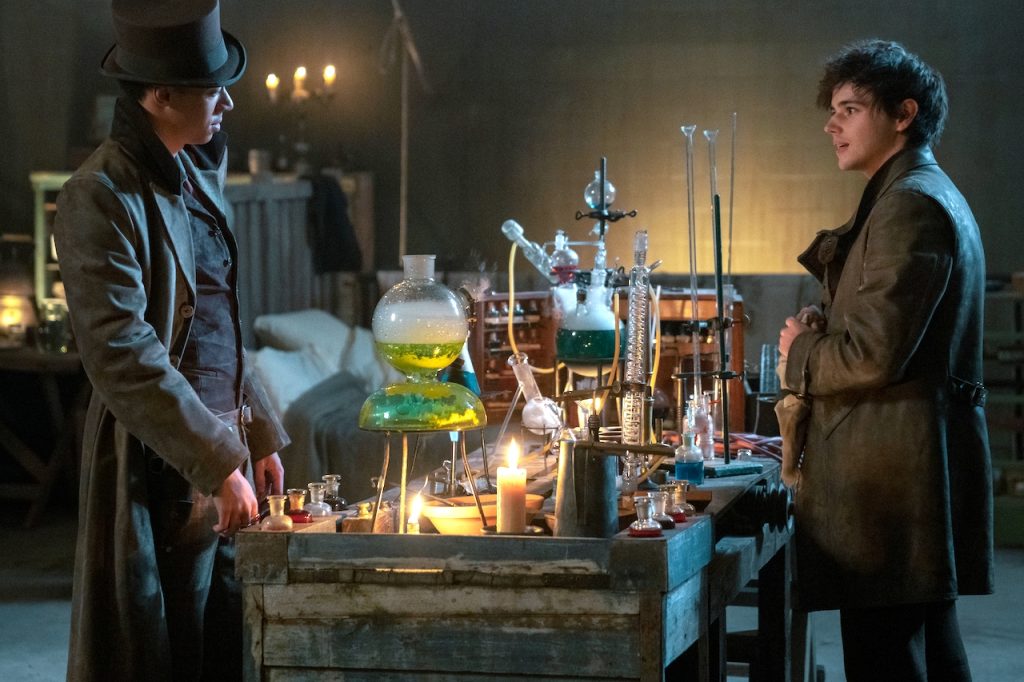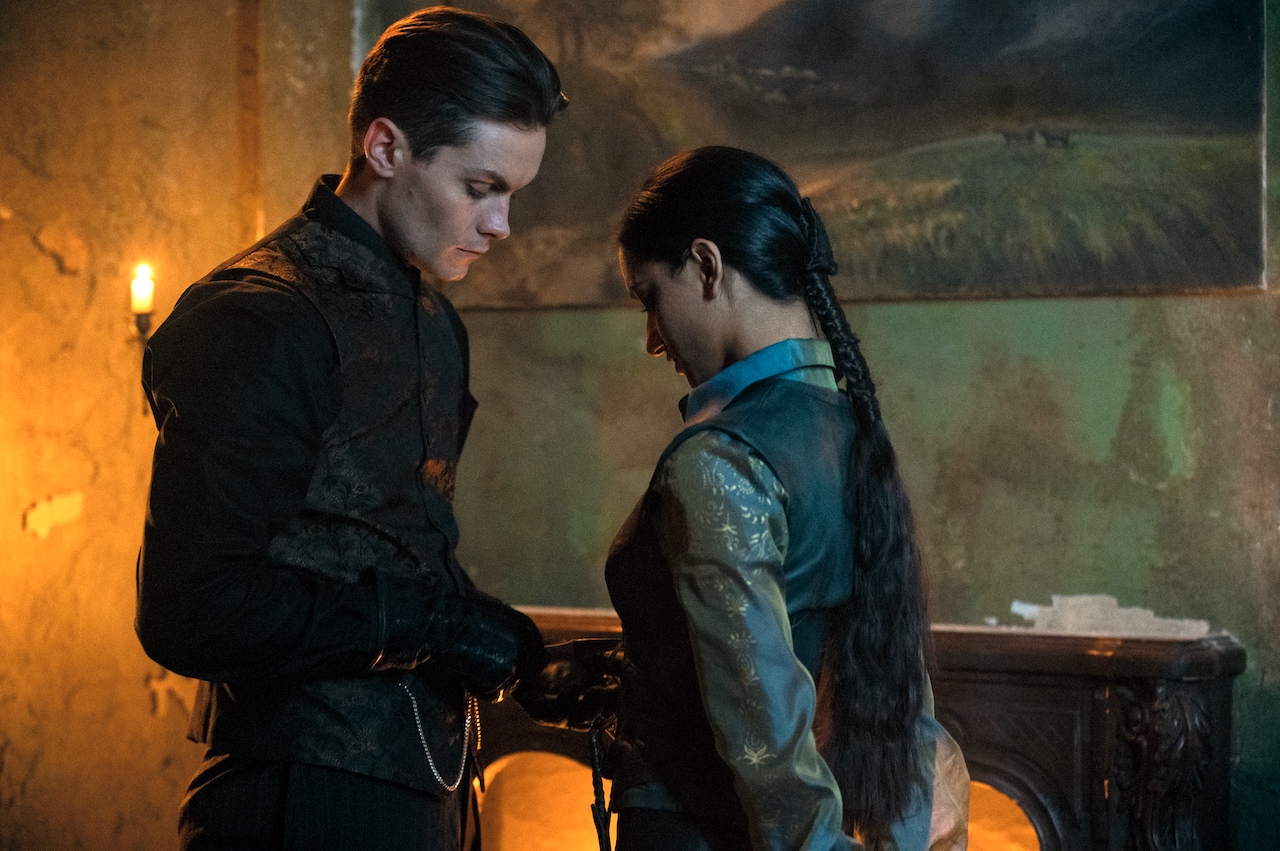Shadow And Bone is back for a second season. Based on Leigh Bardugo’s worldwide bestselling Grishaverse novels and containing characters from Siege and Storm and Ruin Rising, the second and third books in the series, Shadow And Bone is sure to delight fans. Co-showrunner, executive producer, and writer Eric Heisserer (Arrival, Bird Box) shared his insights on this YA fantasy series with Creative Screenwriting Magazine.
We began our conversation by asking Eric what he believes most attracts audiences to the YA fantasy genre. “Genres like fantasy and science fiction allow us to explore contemporary challenges and problems, be they societal or personal, through the lens of a genre that allows us essentially to hide the medicine in the ice cream and digest something and process it internally,” he elaborates. The YA (Young Adult) genre descriptor, “specifically bends toward the problems of younger people.”
“These are typically problems that seem insurmountable because it is not just a personal conflict issue that they tend to have. It is a problem with a system that is rigged against them.”
YA stories bend toward problems in a system rigged against young people
Eric Heisserer was first attracted to Leigh Bardugo after picking up a copy of Six Of Crows on a whim. He was captivated by Vardugo’s sense of world building. It was his gateway drug into the Grishaverse. “I think Vardugo coined the term “Czar Punk,” that is Eastern European, vaguely 1870s,” says the screenwriter. He further defines Bardo’s writing as “second world fantasy, meaning that it is entirely fictional, which allows her, and by extension, us, a lot of leeway to create something that feels original, inspired by our world, but isn’t a direct one-to-one comparison.”
“I think the other part is in what Leigh has built in her version of a magic system, which is the small science of Grisha. I consider it to be a crunchy system that has a lot of interesting rules and that there is a deeper mythology to it that you start to unravel the further you go into her books,” he continues.
Book series adaptations into movies typically follow the linear path of least resistance. Although Six Of Crows still remains Heisserer’s favorite Bardugo novel, he couldn’t immediately adapt. Season 2 of Shadow And Bone is a hybrid of the second and third in the Grishaverse trilogy.
When Eric Heisserer first considered adapting Shadow And Bone, Netflix only had the rights to that trilogy, not his beloved Six Of Crows duology. He loved the marriage of fantasy and lore in it so much, he referred to is as Ocean’s Eleven meets Game Of Thrones.

Eric Heisserer
Heisserer confesses, “In my hubris to Netflix, I said I would only consider this fully if we could include the the Crow’s characters and develop them in their storyline along the timeline of Shadow And Bone.” This proved to be an effective strategy which opened the gates for the screenwriter to write prequel novels worthy of the events that could happen to these characters.
This allowed the writer to expand the world and characters of Shadow And Bone and “showcase different classes of people in different parts of the world.”
Much of the story groundwork has already been laid by novelist Leigh Bardugo. “The world is diverse. It has a number of distinct environments, populations, and viewpoints,” states Heisserer.
The sense of time and which calendars were used between the worlds was also determined by Bardugo. She also established the seasons of dark and light, and which one would be predominant in each book. Her intricate attention to detail into seemingly minor points only adds the rich texture of the Grishaverse.
Mythology And Lore
These terms are widely discussed in storytelling. Mythology is broadly defined as the underlying truth in a fictional story and lore relates to the acquired knowledge and shared wisdom of the characters as the story progresses. These terms have slightly different meanings in television shows.
“In TV writer parlance, mythology tends to be the larger story that you’re telling for these characters. There is also typically a distinction between mythology and lore as historical events that have happened earlier than anyone else who has currently survived them.”
“Lore is a shorthand for folklore, which is what stories have been made around that mythology that feel to be political or personal biases of the people in power.”
The characters of orphans as heroes and soldiers as fighters feature heavily in these types of stories. “War is very good at manufacturing orphans and widows. And if you have a war that’s been going on for several decades, then a good percentage of your populace falls into one of those categories.”
“And it leads further to the story of Alina Sarkov (Jessie Mei Li) in Shadow and Bone, and the story of more than one of our Crows on the other side, which is coming from a place with no advantage.”
Orphans are unique in that they have no blood family in the traditional sense. Your primary caregivers are gone and your formative years are difficult. “You must find your own path. Sometimes, that is by being a wallflower and sometimes that is by knowing how to blend into the shadows or to strike out and fight.”
Alina Starkov is a teenage girl who grew up with Malyen Oretsev (Archie Renaux) at an orphanage in Keramzin in the Kingdom of Ravka.
Eric Heisserer believes that this is one of the core engines of Leigh Bardugo’s books. “It was a tenet of our adaptation to embrace the power of someone who grew up an orphan during a prolonged war.”
Darkness and Light have also been portrayed as as the distinction between good and evil in their most basic sense. They represent powerful feuding opposite forces. “There is revelation and deceit. There is wisdom and wilful ignorance as well,” adds Eric.
Crows have been associated with upcoming dramatic change – good and bad. “Kaz (Freddy Carter) speaks to this in Season 1 briefly in his plea with the Inej (Amita Suman),” says Heisserer. “Kaz speaks truth about the fact that the crows are highly intelligent and they’re faithful to each other. They’re mindful, they’re far more observant, and they recognize and remember those who are a threat and those who are kind to them.”
“However, it’s an interesting relationship that we feel happens emotionally in the behavior of our thieves, Inej, Kaz, and Jesper (Kit Young) with the other characters.”
The Adaptation Process
Navigating the adaptation process combines extracting, rejecting and inventing elements of the novels. Eric Heisserer leaned into his TV writers’ room which comprised of a diverse slate of writers each bringing a unique perspective to the source material.
“And in so doing, we find that we have a lot of mouths to feed in terms of characters in the second season of a show that is also introducing new characters.”
“And we had to find how to tell the story as aerodynamically as possible so that we could still spend enough time with these characters to get excited about seeing them.”

Jesper Fahey (Kit Young) & Wylan (Jack Wolfe) Photo by Dávid Lukács/ Netflix
A key difference between page and screen is that the Shadow And Bone trilogy of books was written in first person POV and is largely told in the head of the protagonist Alina. There are no real or imagined characters that pivot to another character during Alina’s narrative.
This was a major consideration in developing the television series. “You have to invent a lot in this scenario, knowing that you’re going to want to move to other characters that are already fully established in the show and follow them. And then you need to figure out what from Alina’s POV works best to integrate with the scenes that you’re building for these other characters.”
Eric Heisserer insists that this was the key departure from the books rather than his need to invent completely new storylines. “We got character-centric and we put cards up on a wall that had episode numbers one through eight and got a sense of the progression of each of our characters that we wanted to follow,” he articulates.
“If there were any characters that didn’t seem to move much in one direction or another, we needed to focus on that. How are we failing this character’s growth in this episode is as important for them to be either stubborn or take a backseat for a moment and have their spotlight episode arrive a little bit later.”
These choices helped them decide which scenes to include, how they affected the storylines and how they would propel them into the next episode.
“We were cautious about falling into “and then” sequential storytelling, which is when a big event happens and our characters have to react to it before moving on to the next scene.”
Another concern with writers adapting so much rich source material is containing the sense of overwhelm. What do keep and what do you discard? “You get as much packed into the episodes as you can,” jokes Heisserer. There was considerably more footage that didn’t survive the post-production process. “Those are all essentially scenes that aren’t entirely canonical, but they leaned on them. Or they were from the books, or they were a moment or a line of dialogue that we enjoyed, and yet couldn’t find a way to integrate into the pace of the episode,” explains the writer.
Sadly, Eric Heisserer and his co-showrunner Daegan Fryklind couldn’t convince Netflix to extend the show into a twenty episode season order to allow them to more fully explore the story.
“You find a gear that the studio or network feels is the right gear in terms of momentum and propulsion for your narrative. And anytime you drop out of that gear, you have to justify it. You really have to jump on that grenade and do your best to protect it,” declares Heisserer.
The budding romance between Alina and Matthias (Calahan Skogman) serves as a respite to the dark tone of Shadow And Bone. It also explores the confusion and heartache that comes with adolescent love. Matthias’ doubts are amplified because he is so new to the emotions associated with his first love. He’s also torn between his loyalty to his religion which dictates that Alina is wrong for him. “It allows us to build a character arc for Matthias that shows him radicalized by his religion and exacerbated by the people that he interacts with.” This creates tension because we don’t know how Matthias will behave around Alina should they reunite.
He is not my weakness. He is my universe.
Shadow And Bone is ostensibly Alina’s story which follows her evolution into a superhero. “We wanted to make sure that the mythology of the amplifiers that allow Alina to get more and more powerful as she goes, spoke to her character, spoke to her her behavior and her personality, and helped chart an emotional arc as well. Otherwise it felt like exposition,” adds Heiesserer.
“And what Deagan and the other writers mused on with me about these amplifiers is that they are unlocking different emotions and are anchored to different emotions that help Alina process her trauma. The Sea Whip is very much an angry element that is about her learning to accept and manage her rage.”
The firebird is the culmination of her ascension to power and the healing that comes from it. It’s about love, which is also why it’s represented by Malyen.
